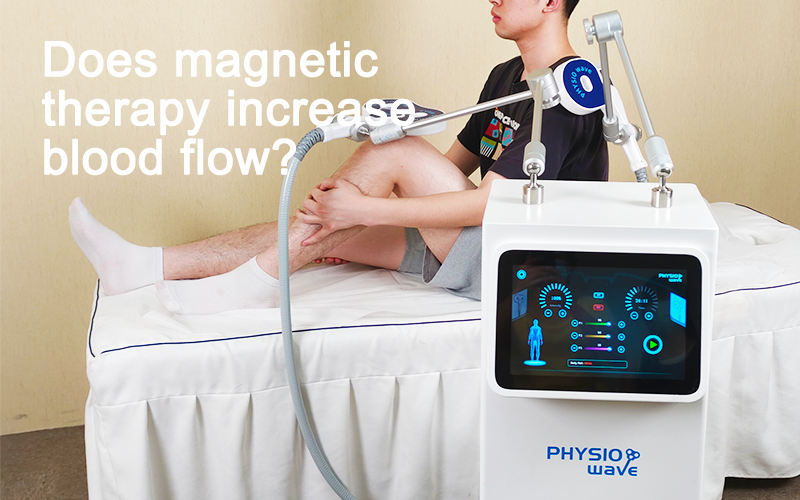Many people struggle with poor circulation—cold hands and feet, fatigue, or slow recovery after exercise. In search of relief, alternative treatments like magnetic therapy have gained popularity, promising improved blood flow and natural healing without drugs or surgery.
While the idea sounds appealing—magnets that enhance circulation and support recovery—many wonder if it truly works or is just another wellness trend. The debate between anecdotal success and scientific evidence has left many confused about whether magnetic fields can actually influence blood flow.
In this article, we’ll explore what science says about magnetic therapy for blood circulation, how it’s thought to work, and whether it’s worth considering as part of your health routine.

What Is Magnetic Therapy?
Magnetic therapy—also known as magnet therapy or magnetic field therapy—involves using static or pulsed magnetic fields to stimulate healing and promote circulation. Devices can range from magnetic bracelets to professional pulsed electromagnetic field (PEMF) machines used in clinics.
The principle behind magnetic therapy is that magnets may influence charged particles in the blood, potentially affecting how blood vessels expand and contract.
Table of Contents
- How Magnetic Therapy Works
- Scientific Evidence on Blood Flow
- Potential Benefits of Magnetic Therapy
- Types of Magnetic Therapy Devices
- Limitations and What to Expect
- Comparison with Other Circulation Treatments
- Conclusion & Call to Action
How Magnetic Therapy Works
Magnetic therapy operates on the concept that exposure to magnetic fields can influence biological processes. Static magnets generate a constant magnetic field, while pulsed electromagnetic fields (PEMF) deliver waves that vary in intensity and frequency. The goal is to improve cellular function and blood circulation by affecting ion exchange and oxygenation.
In practice, PEMF devices—such as those used in physiotherapy—can penetrate deeper into tissues, stimulating microcirculation and promoting healing in muscles and joints.
| Type | Magnetic Field | Common Use |
|---|---|---|
| Static Magnets | Fixed, non-changing | Bracelets, patches, mattresses |
| PEMF Devices | Pulsed, adjustable intensity | Clinical physiotherapy, pain relief |
Scientific Evidence on Blood Flow
Research on magnetic therapy and blood flow is mixed. Some small studies suggest temporary increases in circulation or oxygen saturation, while others find no measurable difference compared to placebo treatments.
For example, while magnets may slightly alter blood viscosity or vessel dilation in controlled settings, large-scale clinical trials have not confirmed consistent or long-term effects. The placebo effect—where patients feel better simply because they believe in the treatment—also plays a significant role.
| Study Type | Outcome |
|---|---|
| Small pilot studies | Mild, temporary circulation increase |
| Clinical trials | Inconclusive or no significant change |
| Meta-analyses | Limited evidence for sustained benefit |
Potential Benefits of Magnetic Therapy
Despite limited evidence for strong blood flow enhancement, some users and practitioners report subjective improvements, including:
- Reduced muscle tension and soreness
- Temporary pain relief
- Relaxation and better sleep
- Enhanced recovery after exercise
These benefits are more likely related to neuromuscular relaxation and placebo response than direct physiological changes.
Types of Magnetic Therapy Devices
There are two main categories of devices available for circulation and pain management:
- Consumer Products: Magnetic bracelets, wraps, and shoe insoles designed for daily use.
- Clinical Equipment: PEMF machines, like the NEWBELLE MS-139 Physio Wave Magnetic Therapy Machine, used in rehabilitation and physiotherapy settings.
Clinical-grade machines offer controlled intensity and measurable outcomes for professional treatment.
Limitations and What to Expect
It’s important to set realistic expectations. Magnetic therapy is generally safe but should not replace medical treatment for vascular or circulatory conditions. While it may offer temporary comfort and relaxation, it’s not proven to substantially increase blood flow or oxygen levels in the body.
Always consult a healthcare provider before starting any new therapy, especially if you have heart conditions or implanted medical devices.
Comparison with Other Circulation Treatments
| Treatment | Mechanism | Effectiveness | Evidence Strength |
|---|---|---|---|
| Magnetic Therapy | Magnetic field stimulation | Low–moderate (subjective) | Limited |
| Pressotherapy | Air pressure massage | High for lymph drainage | Strong |
| Infrared Therapy | Heat and light energy | Moderate | Moderate |
| Exercise | Muscle contraction increases flow | High | Strong |
Conclusion
So, does magnetic therapy increase blood flow? Current evidence suggests that while some users feel subjective improvements, there’s no conclusive scientific proof of significant or lasting effects. However, professional PEMF systems may enhance microcirculation and recovery as part of a holistic wellness or physiotherapy program.
For safe, effective magnetic field treatments designed for clinical and wellness use, explore the NEWBELLE MS-139 Physio Wave Magnetic Therapy Machine—engineered to deliver targeted pain relief and rehabilitation support through advanced pulsed magnetic technology.
References
- NEWBELLE Physio Wave Magnetic Therapy Machine
- Healthline: Magnetic Therapy Overview
- NCCIH: Magnetic Field Therapy Overview




